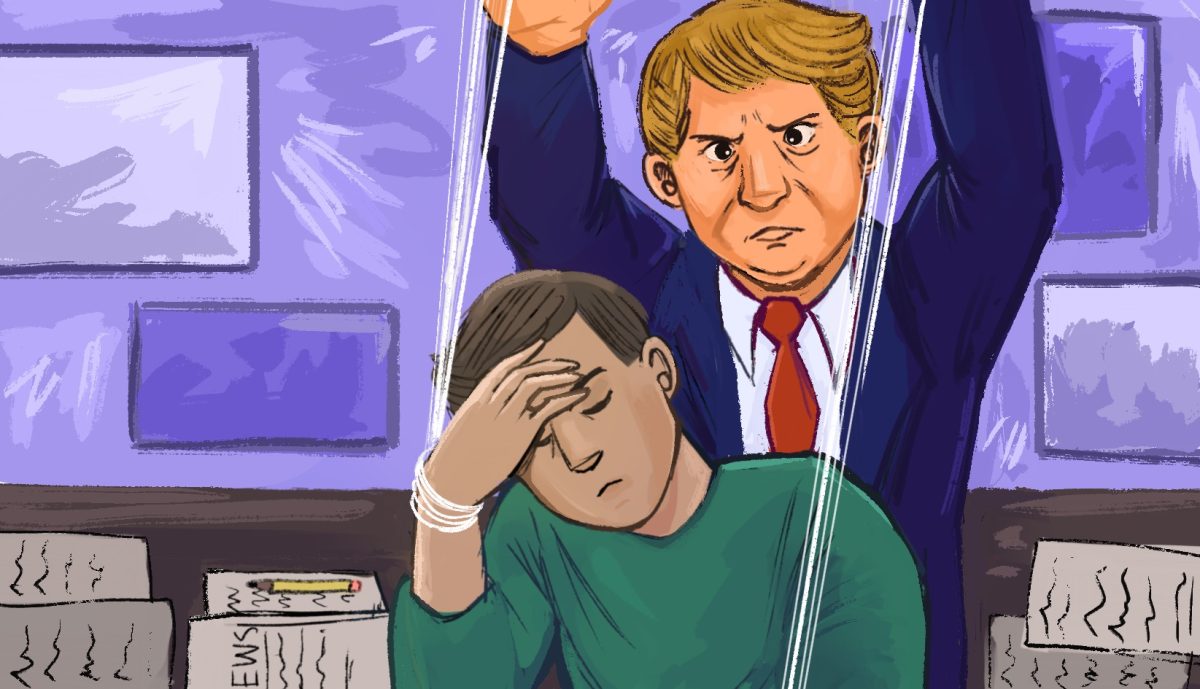As I glanced over a maddeningly dull natural science passage about barn owl migration patterns, my shirt damp with sweat, my hand shaking as the clock slowly ticked down, I couldn’t help but feel immensely frustrated. None of the words seemed to be sticking in my brain even though I scoured over them several times; my heart rate was simultaneously escalating because I knew I was eating up precious time. Leaving my first ACT experience, I felt astoundingly awful. Although I had always excelled in my English and Reading classes in the past, I was sure I had failed the reading section.
Following the test, I took slight comfort in the notion that many other juniors struggle with standardized testing similarly. Before the COVID-19 pandemic, test-optional popularity grew because admissions officers were concerned that standardized tests put Latinx and African American applicants at a disadvantage because of socioeconomic disparities. The COVID-19 pandemic fast-tracked the test-optional movement, as many universities shifted to test-optional policies because of limited testing centers and accessibility. Following this shift, many people believed standardized tests would disappear entirely in the future.
Yet, standardized tests certainly aren’t going anywhere, as requirements have recently changed, returning several schools back to “required” after years of “test-optional” ambiguity. For example, students who apply to test-required schools must submit standardized test scores, while students who apply to test-optional schools may choose whether or not they want to submit a score. In February, Yale University announced that it would require standardized test scores from applicants once again, followed by Dartmouth College, Brown University, Georgetown University, Harvard University, the University of Texas at Austin, and other highly selective schools.
According to Dartmouth researchers, students who applied test-optional had “relatively lower college GPAs” compared to those who submitted test scores. On the other hand, standardized testing can require additional practice and guidance, which are resources privileged students have better access to. Hence, standardized tests may only measure the “family and community capital of the student,” but there is still no viable replacement for them.
Overall, if standardized test requirements are coming back, standardized tests need to be required everywhere or dissolved entirely.
With schools changing their test-optional policies this past winter, some students must change their post-secondary plans accordingly. Getting into their dream school may no longer be possible because a student chose to opt out of standardized tests in their junior year of high school—a decision that colleges, counselors, and other trustworthy adults assured them would have no consequences.
On the flip side, thousands of students stretch their mental capacities to their limits, juggling the stress of post-secondary planning, junior year, potential AP classes, and AP testing, all while trying to kick their test scores up by a few points. Even after all of their efforts, another student with similar credentials could be accepted without submitting a score, as test-optional schools must admit some students who do not submit scores to ensure that the school is authentically test-optional.
Neither situation sounds particularly attractive to a junior trying to decide whether or not to take standardized tests, but unfortunately, test-optional schools have created an environment where juniors are pressured to decide for themselves. Students can either take on extra work and stress or live with the anxiety of opting out and coming short of their dreams.
The test-optional label can also be remarkably misleading, with statistics showing that schools often admit more students who submit test scores than those who do not. For example, the acceptance rate at Boston College in 2022 was 25% among students who submitted a test score compared to 10% for those who did not. The same was true of many other selective and moderately selective schools. At Fordham University, the 2022 acceptance rate was 63% for those who submitted test scores and 49% for those who did not.
The test-optional shift also inevitably messed up the average test scores for that school, making schools across the nation appear increasingly selective. This increase comes from a practice college admissions officers refer to as “gaming the system,” where a student is only inclined to submit a score if it is well above the average at that school, and pursue a test-optional application if their scores fall out of range. Hence, many schools have only received test scores well above their pre-COVID averages, raising the average standardized test score range at that school. Such raises may discourage juniors from applying to their dream schools while making college admission appear more impossible.
Unfortunately, wealthier students also have an undeniable advantage in terms of the standardized testing process because they have access to additional guidance, such as tutoring. Growing up in Edina—an area where students are encouraged to practice and take the ACT and SAT—I met with many tutors who slipped in ACT secrets you don’t learn in school, including how to approach the different sections, know when the test is tricking you, and manage the nearly impossible time limits.
Although there are many shortcomings, there are some theoretical advantages to standardized tests. They can reflect a student’s diligence, especially when they are willing to work hard to improve their score. It is certainly possible to improve your score with practice—standardized tests have the ability to set students apart from others. Some students excel on standardized tests and can use them to boost their application if their high school does not offer many rigorous courses. Also, in the most highly selective schools where everyone submits an almost-perfect GPA, such measures could be useful for admission prospects.
Pressuring students to decide for themselves is the ultimate problem. Junior year of high school is already complicated enough, and with some schools requiring tests once again, lingering test-optional policies only create unnecessary ambiguity that further pressures, confuses, and frustrates students. If every school brings them back, fine. If every school eliminates them, fine. Although it may not be a reality they wish to confront, college admissions offices across the country must make a collective decision regarding national standardized testing administration to save students from burnout under this disorienting, obscure process.













